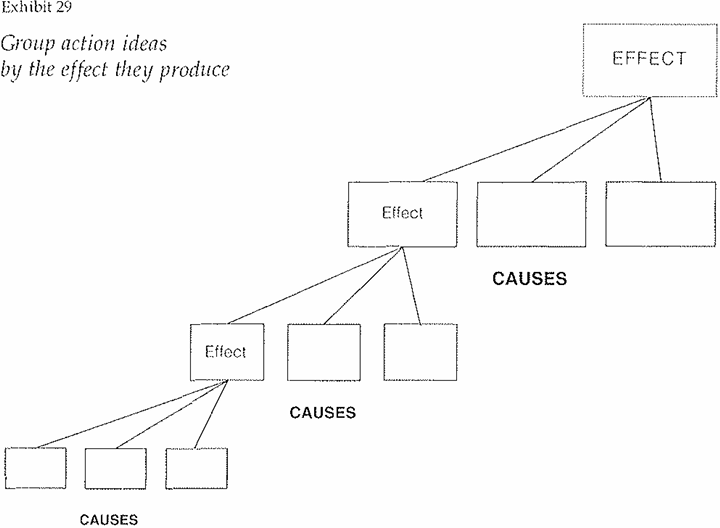


 Grammar
Grammar
 Tenses
Tenses
 Present
Present
 Past
Past
 Future
Future
 Parts Of Speech
Parts Of Speech
 Nouns
Nouns
 Verbs
Verbs
 Adverbs
Adverbs
 Adjectives
Adjectives
 Pronouns
Pronouns
 Pre Position
Pre Position
 Preposition by function
Preposition by function 
 Preposition by construction
Preposition by construction
 Conjunctions
Conjunctions
 Interjections
Interjections
 Grammar Rules
Grammar Rules
 Linguistics
Linguistics
 Semantics
Semantics
 Pragmatics
Pragmatics
 Reading Comprehension
Reading Comprehension|
Read More
Date: 2024-09-28
Date: 2024-10-02
Date: 2024-09-18
|
The great majority of ideas in business writing are statements of actions-i.e., statements described by such plural nouns as steps, recommendations, objectives, or changes. You use them when writing manuals, developing action plans, describing systems, or spelling out how to go about solving a problem. But stating, relating, and summarizing action ideas to tell people clearly how to do something or how something works is the hardest thinking I know. Witness the plethora of unreadable manuals in the world and the failure of Management by Objectives as an administrative technique.
The difficulty lies in the way actions relate. We know that, since actions are always taken to achieve some purpose, the summary of a set of actions is always the effect of carrying out the actions. Any MECE set of actions plus the effect they produce will together form a unique closed system, in the sense that if one takes that particular set of actions, one can be certain they will produce the effect stated. And a process that includes a large number of actions will consist of a hierarchy of unique closed systems (Exhibit 29).

So far so good. The trouble is that the actions in any grouping are not significantly related to each other except in terms of the effect they together achieve. In other words, all actions look alike, whether they serve as cause or effect in the hierarchy. That is, they all imply the words "You should" or "We will", followed by a verb. This means you can't tell whether one action goes with another by looking at them. individually. You can only make the judgment in light of the effect you intend them to achieve.
Thus, if you make a list of the actions you think you should take to achieve some objective, you can't judge whether you have left any out until you state the effect they are meant to achieve. But the effect is in turn dependent on the specific actions you bring together. This interdependence can make sorting out your thinking a bit of a nightmare, particularly if you are trying to describe a lengthy process with many steps and substeps.
Fortunately; there are some techniques available to ease the job of sorting out your thinking and presenting it clearly:
- Word each action as specifically as possible before you try to relate then
- Look for obvious cause-effect groupings, so that you can keep the steps in each grouping to five or fewer
- Derive the effect directly from the statements of the actions
|
|
|
|
دراسة يابانية لتقليل مخاطر أمراض المواليد منخفضي الوزن
|
|
|
|
|
|
|
اكتشاف أكبر مرجان في العالم قبالة سواحل جزر سليمان
|
|
|
|
|
|
|
اتحاد كليات الطب الملكية البريطانية يشيد بالمستوى العلمي لطلبة جامعة العميد وبيئتها التعليمية
|
|
|